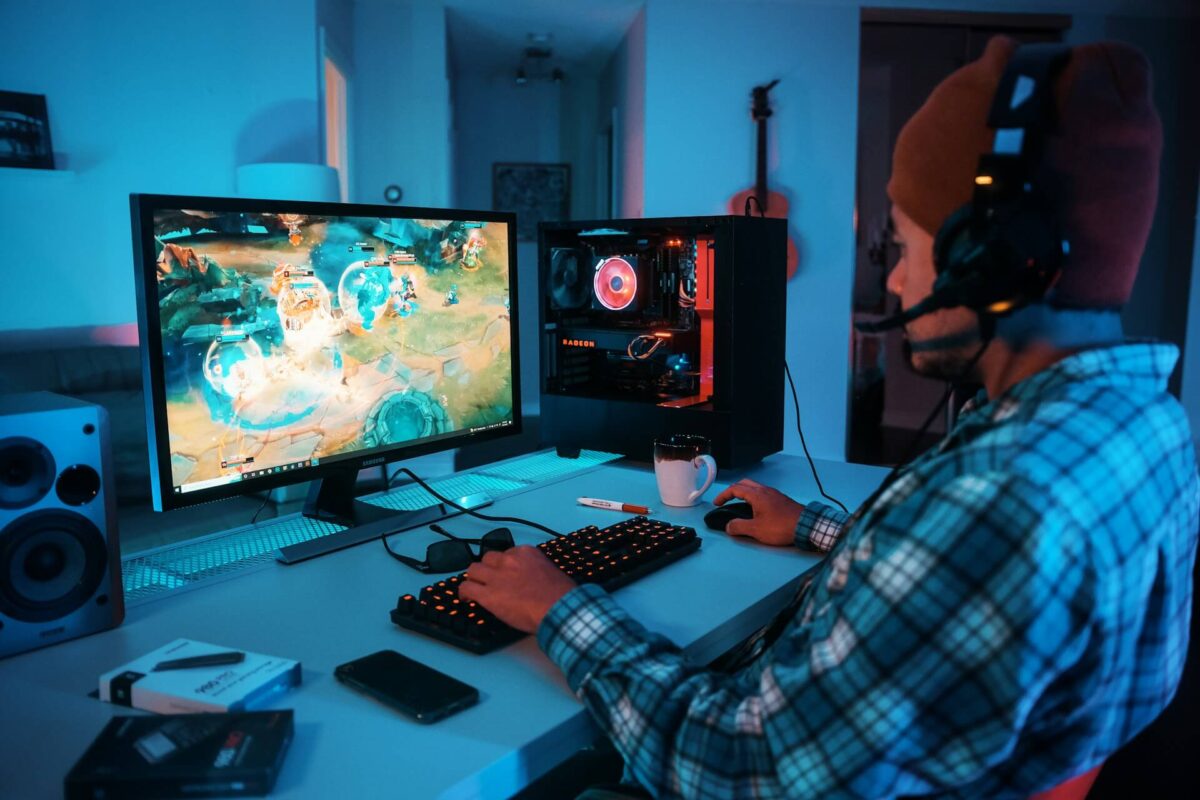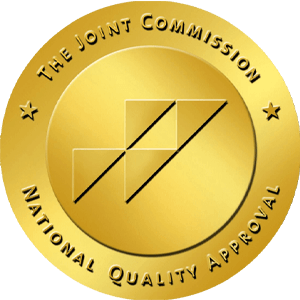With the introduction of AI in recent months, the concern of screen addiction is all the more serious for anyone already concerned. From social media to gaming platforms, AI gives technology the edge in providing quick, easy, and sophisticated responses to willing users of all ages. Combine that with the fact that screens can be found everywhere in one’s daily life and routine, and a recipe for disaster can result. Whether it be at school, work, home or even while shopping inside a store- screens are found everywhere in sight. And if not by location, then by the palm of our hand. With this new norm there is reason for more research in understanding the impacts of screen use and the impacts they have on a person’s health. Believe it not, similar to substances like drugs and alcohol, screen time abuse can become worse over time when left untreated. In fact, recent studies have revealed that too much screen time can lead to issues such as obesity, disturbed sleep, behavioral problems, and deficits in learning and socialization. Hence the importance of identifying signs of screen addictions from social media to gaming in all its various forms. We will dive into what screen addiction can look like, whether in your own life or someone else’s, so let’s get started.
How And When Is Screen Addiction Diagnosed?
Diagnosing screen addiction can be difficult because psychologists are still trying to understand this relatively new disorder and its perimeters. However, most psychologists today would agree that screen addiction is a behavioral disorder very similar to that of substance addiction. Screen addiction is described as an excessive and compulsive use of digital devices such as; tablets, smartphones, computers, and televisions. It can include excessive use of social media platforms, playing video games, scrolling the internet, and pornography. We know now that screen addiction can have serious negative effects on a person’s mental and physical health, including: sleep disturbances, anxiety, depression, social isolation, eye strain, muscle strain, and body weight issues.
Screen addiction can affect people of all ages, but it’s especially concerning for teens. Negative effects can seriously impact youth and young adults in the forms of speech delay, cognitive impairment, and even poor bone health. This is why identifying signs of screen addictions from social media and gaming is so important sooner rather than later. Recognizing the signs in children and young adults being the top concern. In fact, recent findings from studies suggest that how children use the devices, not how much time they spend on them, is the strongest predictor of emotional or social problems. A recent study found that the question anyone concerned about screen addiction should be how children use their devices, instead of just how much time they spend on them. In fact, this answer may be the strongest predictor of emotional or social problems connected with screen addiction. This held true after researchers controlled for screen time.
What Factors Contribute To Screen Addiction?
An addiction to screens and the devices they derive can reveal itself in many ways, including constant and obsessive thoughts about media watched on a screen. Feelings of anxiousness or irritability when not able to watch a screen is another strong indicator. Choosing to neglect family and friends in social situations can be the biggest clue in identifying signs of screen addictions from social media to gaming. Especially when observed by concerned family members that confirm change in a loved one’s involvement and behavior. But how does a person go from healthy screen enjoyment to a potential screen addiction concern? From a scientific standpoint, dopamine release is the hormone responsible for driving and reinforcing habits. Therefore, besides any underlying trauma or contributing factor our biological processes also play a role in potential screen addiction. Research is finding that stimuli produced by screens can activate the dopamine reward system in the brain, creating a dopamine feedback loop similar to those found in the brains of nicotine or cocaine users. Thankfully there are screen addiction treatment options available for anyone concerned with excessive use and dependence on screens in their everyday life. Omega Recovery for example, understands both the underlying factors and biological factors that play a role in screen addiction. We combine both commonly used forms of treatment as well as holistic forms.

Key Identifying Signs Of Screen Addictions From Social Media To Gaming
Signs that can indicate a potential screen abuse and/or addiction can range, just as all us have behaviors that naturally can range. However, below are the most common identifying signs of screen addictions from social media to gaming that we see today.
Excessive Use: Watching a screen for longer durations than intended or finding yourself using digital devices with increased frequency over time is excessive use. For instance, one study found that a person spending six hours or more hours per day watching screens had a higher risk for depression. While limiting social media use to 30 minutes per day within that same study led to a “significant improvement in well-being.” Excessive use can also be categorized as obsessive screen use even when it negatively impacts other areas of everyday life.
Mood Disturbances: One of the biggest confirmations in identifying signs of screen addictions from social media to gaming are mood disturbances. Mental health effects of mood can be seen as impatience, irritability, restlessness, frustration, and an inability to focus when separated from their screen of choice. Frustration is often the emotion most observed in people of any age, which can be explained by the ‘shut off’ of dopamine to the brain. Screens can trigger the brain’s dopamine reward system, releasing a small dose of dopamine with each post, content feedback or game reward. This can create a feedback loop that makes the screen users want more, explaining the frustration when cut-off.
Deception: Lying about usage or time spent on a screen can be considered deception and one of the identifying signs of screen addictions from social media to gaming. While lying about screen time use may be a bit more expected with children, young adults and adults should be truthful. Maturity gives us the sense in being truthful and honest with others and ourselves. A lack of maturity is shown in deceptiveness, and is a sure sign of possible screen addiction.
Withdrawal: Increased irritability or anxiety when unable to use devices with a screen is the most obvious example of withdrawal and potential screen addiction. Very similar to drug or alcohol abuse, the absence of a screen can trigger someone addicted to feel upset, angry, depressed, anxious, and even physically ill in severe cases. Limiting use of a screen dramatically can show whether feelings of withdrawal exist in a person struggling with diagnosis.
Sleep Disturbances: Sleep disruption and/or deprivation can drastically interfere with normal physical, mental, social, and emotional functioning. In many studies, screen use or exposure to blue light before bedtime has shown to lead to significant sleep disturbances. Blue light exposure from our screens, particularly during nighttime hours, disrupts our sleep because it confuses our natural circadian rhythm. A dependence to calm the mind and fall asleep to screen exhaustion is also an enormous concerning sign of screen dependence in everyday functions.
Neglect Of Responsibilities: Screen addiction can not only affect a person’s confidence and ability to manage responsibilities like school and work, but also negatively impact relationships. Screens can be a major distraction for anyone, let alone someone struggling with potential screen addictions to social media and gaming. Personal hygiene, daily chores, physical body movement, and focus on responsibilities at hand can all be negatively affected. This neglect of responsibilities can worsen already challenged personal relationships with family members, friends at school, or co-workers.
Negative Effect On Work or School: Screen use may interfere with the person’s ability to focus or perform well in work or school. In most schools today, screens are used for educational purposes and engagement. However, when screens become more the focus than the lesson- cognitive performance declines and a distraction prevails over education. This form of distraction can also negatively impact work performance, as someone addicted may prioritize their social media or gaming over their responsibilities. Screen addiction left unchecked can result in a child being held back in school or a person to lose their job.
Negative Physical Effects: Too much time spent looking at screens can cause fatigue or discomfort in your eyes as well as dimmed vision. Glare on screens can also cause severe
headaches for those who abuse screen time in their everyday life. Reduced Cognition is also something that raises great concern for parents already conflicted about the amount of screen time their child has. Studies conducted are now showing these kinds of physical and mental ailments that are correlated directly with unchecked screen time and it’s abuse.
Preoccupation With Screens: The person is frequently thinking about using screens or is always looking for ways to use them. We can all agree that many of the things we do on our screens are designed to keep our brains stimulated, as they were no doubt designed to. People are drawn to screens because of their predictability, their ease, and sense of comfort they provide. However, when a person prefers to play video games, watch YouTube, or engage in social media forums rather than play outside or connect with loved ones- there is a major concern. Identifying signs of screen addictions from social media to gaming is a key action in helping to prevent excessive preoccupation with screens.
Self Isolation: Also can be known as interference with socializing, self isolation is a sure sign of potential screen addiction if devices are commonly used. When a person feels more comfort from a screen than a loving and supportive life that surrounds them- addiction may be the culprit. While self isolation is needed sometimes in life to reflect, rejuvenate, or find a sense of inner balance- replacing real components of your life with artificial ones from a screen is concerning. If you or a loved one tend to self isolate in order to gain more screen time, seeking help from a professional screen addiction facility in Austin may be in order.
Becomes An Escape: When screen media or game is the only thing that seems to motivate the person in question of potential addiction, there is a major concern. While there may be nothing wrong with someone wanting to blow off a little steam or distract themselves from stress here and there- a concern develops when it becomes the only escape and coping mechanism. Stress is a natural part of life, one that helps a person build their strength and character. Screens and the channels they provide from content, to games, to videos should be a treat and less a necessity for coping stressful situations.
Loss Of Interest: The first and most obvious sign of screen addiction is a loss of interest in activities once enjoyed, time spent with others once enjoyed, and a life once enjoyed. When enjoying your gaming app instead of playing with your own children, asking for attention is common- a flag is raised. When engaging with your social media posts becomes more common than engaging with your family and friends in real life- a flag is raised. When watching pornography becomes more important than actively nurturing and engaging with your real partner- a flag is raised. A loss of interest in all the things once enjoyed is a sure sign of a loss of interest in your own identity and life.
Obviously, it is no secret that screen addiction can have a negative impact on a person’s life. Not limited to just their health and relationships, but their entire identity if left untreated. Omega Recovery has deep roots in this area of addiction, as the founder himself has experienced its devastating effects. With a professional diagnosis and proven treatment plan that treats the entire person instead of just the disorder- healing and recovery is possible. Reach out today!




